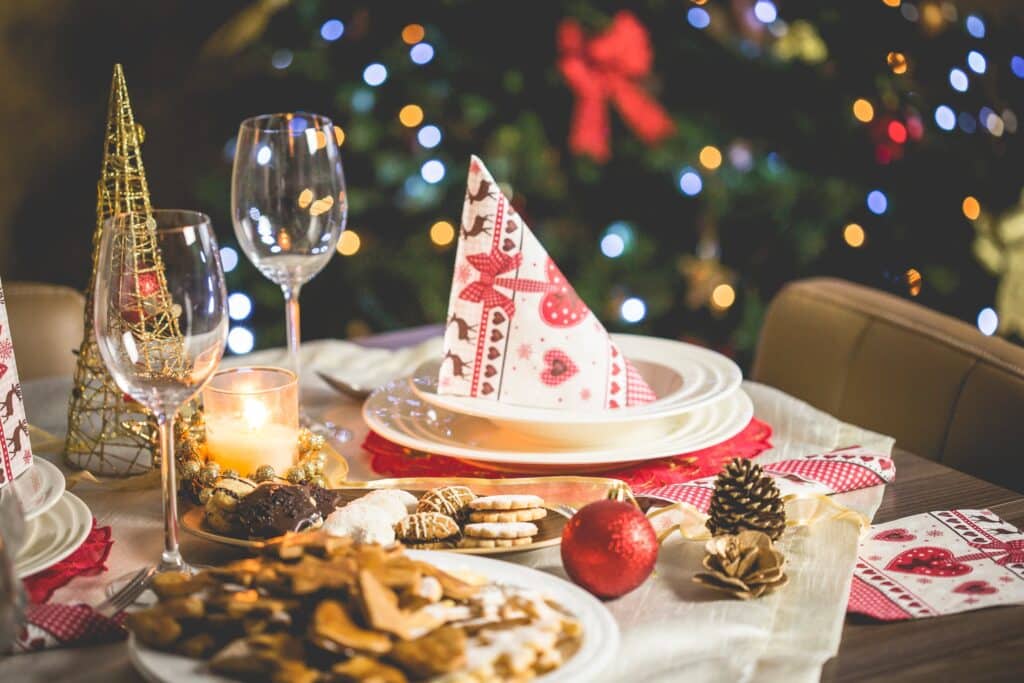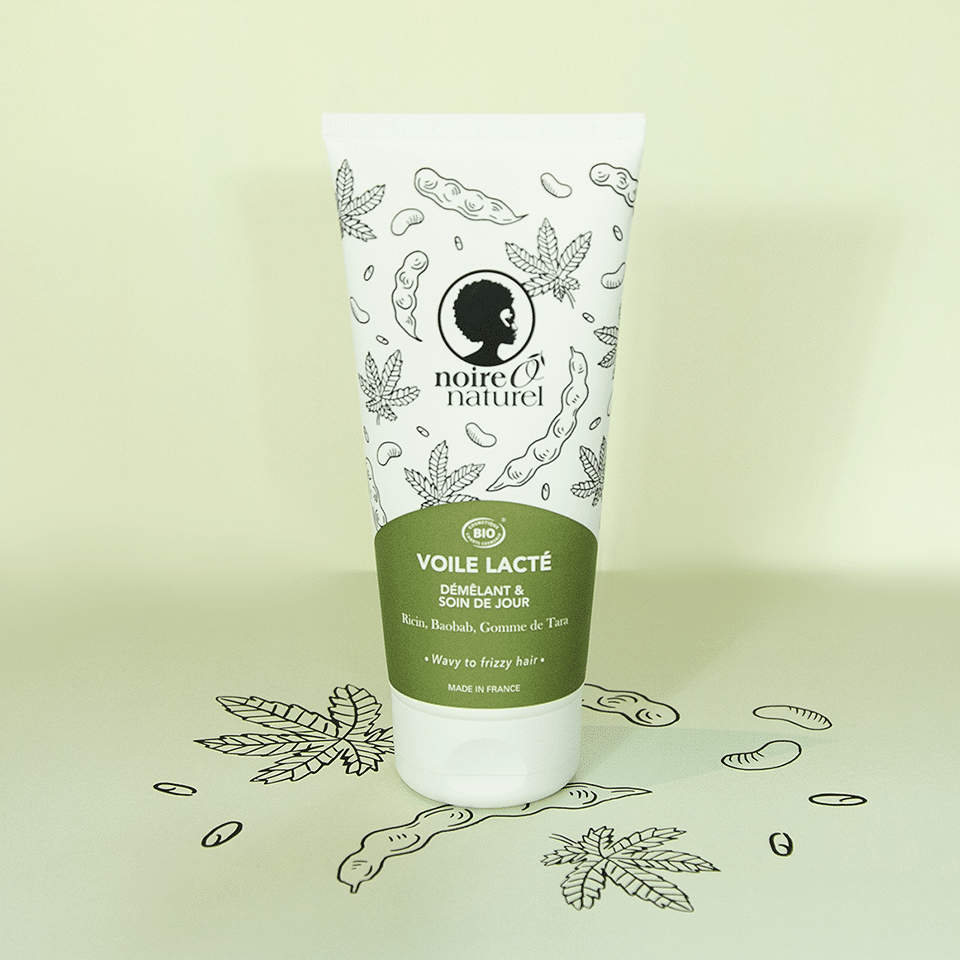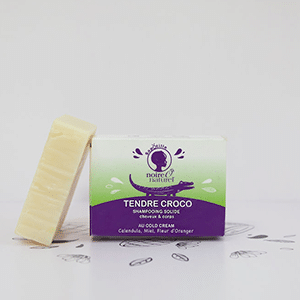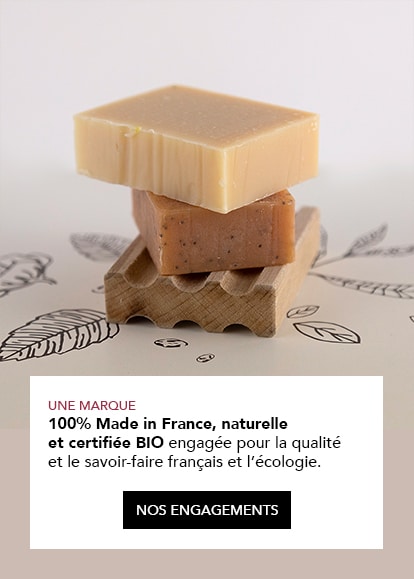Copyright photographie : Ekaterina Bolovtsova
The magic of Christmas, our children’s sparkling eyes, the sound of music, the smell of gingerbread and Christmas trees… Christmas is a magical time that means a lot to many people. It’s a celebration full of childhood memories and traditions that we want to carry on.
But in these times of climate emergency, it’s also important to see Christmas as a consumerist and extremely polluting holiday.
So how do you combine ethical responsibility with the magic of Christmas? We tell you all about it!
1. The impact of Christmas on the planet
Christmas presents are the biggest source of greenhouse gas emissions generated by the festive season: according to ADEME, they account for 57% of emissions during the period. And even though they’re not necessarily useful… We’ve all had an unwanted Christmas presents that we’ve left at the back of a cupboard because it’s of no use to us… It’s a real shame.
Christmas celebrations have a huge CO2 impact in terms of travelling to see family (and that’s perfectly normal), but also in terms of food waste. In Italy alone, between foie gras, meat, shellfish and all the trimmings, the production and consumption of Christmas meals is responsible for some 440,000 tonnes of discarded food.
Christmas lights also have an impact on our electricity consumption, but also on biodiversity: light pollution can be very harmful to flora and fauna.
2. A greener choice of Christmas tree

Copyright photographie : Any Lane
Natural or artificial fir? The choice isn’t so simple when it comes to ecological impact!
Contrary to what you might think, a natural Christmas tree is not always the best option. In fact, its environmental impact depends a great deal on its species, where it is grown and so on. It may be worth finding one with responsible labels!
Although artificial fir trees generate a lot of CO2 in terms of production and transport (especially when they are produced on the other side of the world…), they can still be worthwhile from an environmental point of view. In fact, it all depends on the number of years you use it: if you use your artificial tree for twenty years or so, its environmental impact will be less than that of a natural tree that is changed every year.
You can also opt for other types of tree: cardboard, wood, etc.
3. Giving gifts without over-consumption
300 million Christmas presents are given every year, an average of 6.5 per person. And every year, 12 million are deemed useless, and 1 million of them end up in the bin! (data from @the_greener_good’s post on Instagram).
So it’s important to think more carefully about the way we give gifts, so that we can please ourselves without destroying the planet!
Buying second-hand
And yes, buying second-hand is a great way of giving objects a second life and giving pleasure. It considerably reduces your impact on the environment and combats waste. In terms of budget, it can also mean giving gifts at a more affordable price than if they were new!

Copyright photographie : Ylanite Koppens
Useful presents
In 2016, a rule was invented in the UK for giving more useful gifts at Christmas. It is based on 4 pillars that allow you to think about the usefulness of the gifts to give.
You can offer :
A desired gift: requested by the person, to make them happy (you can still opt for second-hand if possible or responsible manufacturing!)
A gift that can be worn: shoes, clothes… In short, something that will be really useful!
A gift that you need: an essential item that you would have had to buy anyway, so it’s bound to be useful (why not hair products, for example?).
A gift to dream: something that allows you to develop your imagination and creativity (a book, a video game, tickets to the cinema, to see a show, to draw or paint, etc.).
It’s a great way to think about your Christmas shopping!
4. Tips for a greener Christmas meal
As explained earlier in this article, Christmas is a time of extreme abundance of food. There are a number of things that can easily be done to limit the ecological impact of Christmas dinner.
Combating waste: you have to be careful not to eat TOO much. Eating too much won’t be good for your body, which will make you regret it (stomach ache for example, or even vomiting and diarrhoea…). But it’s obviously bad for the planet too, as a lot of food is likely to end up in the bin! Try to assess your food requirements carefully. You can enjoy yourself without eating too much! And by the way, if you have leftovers: don’t throw them away, keep them for the days ahead and make doggy bags for your guests.

Copyright photographie : Picjumbocom
Favour local produce: a large part of the carbon impact of food depends on where it is produced. So for a greener Christmas meal, you can make sure you eat food produced close to home. Not only is it better for the planet, but you’re also supporting local producers!
Reduce meat: as we all know, meat production has a huge impact on the environment. If you’re not yet ready for a 100% vegetarian (or even vegan!) Christmas, you can still make an effort. It may not be necessary to include animal products at every stage of the meal. These days, there are so many delicious alternatives for enjoying a meal without animal suffering! Foie gras, for example, is undoubtedly one of France’s most horrific traditions for animals… and has recently been criticised the world over for its cruelty! There are now plenty of plant-based foies gras to adapt these traditions.
In short, it’s totally possible to perpetuate Christmas festivities and traditions in a more responsible way! We can have a magical Christmas while limiting our impact on the planet. So what are we waiting for?
More tips for a greener Christmas right here.














